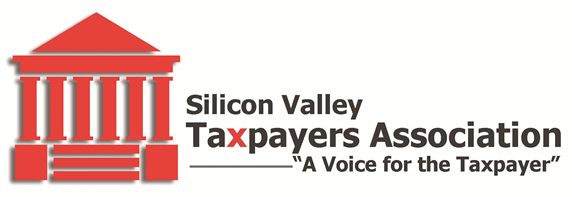-
-
-
Elections
-
-
-
-
-
-
-
-
-
-
-
-
-
-
-
-
-
Caltrain funding measure offers lifeline to rail service as ridership drops (SF Chronicle; 9/16/2020
-
-
-
-
-
-
-
-
-
-
-
-
-
-
-
-
-
-
-
-
-
-
-
Caltrain funding measure on the ballot offers lifeline to the struggling rail service as ridership drops
by Mallory Moench | September 16, 2020
 Caltrain is counting on a sales tax increase on the November ballot to keep the system running through the coronavirus crisis and fund long-term improvements to make service more frequent and accessible.
Caltrain is counting on a sales tax increase on the November ballot to keep the system running through the coronavirus crisis and fund long-term improvements to make service more frequent and accessible.
If passed, Measure RR would allow a 1/8-cent sales tax increase in San Francisco, San Mateo and Santa Clara counties. It would raise an estimated $108 million annually for 30 years. The ballot measure has to be approved by two-thirds of voters in all three counties.
The sales tax increase aims to accomplish two goals — avert a shutdown and fund modernization. Caltrain, which is the country’s seventh largest commuter rail system and has been running since Abraham Lincoln was president, has never had its own dedicated, reliable funding. The system depends on fares for about 70% of its revenue, but has lost up to 95% of its ridership during shelter-in-place directives. The agency now faces an $18.5 million budget shortfall.
Despite the pandemic, more than 3,500 weekday riders still use the service, Caltrain said. Many are lower-income workers who don’t have cars and need to get to frontline jobs.
“Caltrain is an essential part of the Bay Area transit system,” said David Pine, a San Mateo County supervisor and chairman of the Peninsula Corridor Joint Powers Board, which oversees Caltrain. “We need to rescue it during these times of the COVID pandemic, and with the Caltrain Measure RR sales tax, we have the opportunity over time to potentially triple the ridership on that rail corridor, which would make an enormous difference for commuters up and down the Peninsula.”
Other speculative options to keep service running include hoping for more federal bailout funds or asking for increased contributions from the system’s partner agencies, which already give $29 million and are also suffering financial losses, Pine said.
The sales tax increase, long sought before the pandemic, isn’t just about survival, its advocates say. It would also fund modernization projects to increase frequent service and could reduce congestion on Highway 101 by encouraging more drivers to hop on the train. Caltrain is currently undergoing a $2 billion project to electrify trains by the end of 2022. The project is already funded, but once completed, it will increase operating costs, Pine said.
“This is much larger than the threat of a COVID-19 shutdown,” said San Francisco Supervisor Aaron Peskin. “This is really about the opportunity to vastly reduce pollution and particulate matter in the Bay Area and make Caltrain much more efficient and less costly.”
Some Caltrain critics and Measure RR opponents argue the system traditionally serves a niche of high-income tech workers commuting to the city for work — no longer a need under shelter-in-place orders. Around 70% of riders make more than $100,000 a year, Pine said. Adina Levin, executive director of advocacy group Friends of Caltrain, said the board raised fares in recent years when it needed revenue, leading to riders becoming wealthier and whiter than the communities the system serves.
Caltrain is trying to reshape its elitist image, starting by passing an equity plan this month that includes pausing planned fare increases and reducing fares by 50% for low-income riders. The reductions rely on Measure RR funding.
The measure, which was approved by multiple local government and transit agencies in three counties, has little organized opposition. Some critics include the Silicon Valley Taxpayers Association, which also opposes other measures that would raise taxes, and former Foster City Mayor Jim Lawrence.
Lawrence argued that the proposed sales tax is regressive, meaning it’s imposed equally across income brackets. He said blue-collar workers, some who already can’t afford the train, shouldn’t bear the cost.
“I just don’t feel like the general community should support a transportation service that is dying,” Lawrence said. “It’s a dinosaur. Why do we keep propping it up?”
Critics also said that with no end in sight for the pandemic, working from home may become permanent for many, limiting the need for public transportation to downtown San Francisco. Half of commuters surveyed in July reported they would use the system when they returned to work as much as before — although it’s uncertain when office buildings will fill again.
Polling in June reported that nearly two-thirds of voters supported Measure RR, which motivated officials to get it on the ballot.
“This is something that the region really depends on to keep cars off our streets and keep pollution out of our air and increasingly help people move around and access opportunity, regardless of income, and help us recover from the recession,” said Levin. “Caltrain is essential.”
Click here to read the article at the web site of the San Francisco Chronicle.
